Life On An Oil Rig – Do You Know What It Takes?
An offshore oil rig, a floating city on the ocean, is a city that never sleeps. Looming over passing ships, it works silently around the clock, performing its functions far from the nearest coast.
Billions of barrels of oil and gas are produced by oil rigs and gas wells to meet the world’s energy demand. The oil industry is central to the world economy, and changing crude prices impact all nations.
There are numerous resources on how the oil rig works, the equipment on board, and the qualifications to join offshore drilling rigs.
But has anyone considered the lifestyle and daily routine of someone living and working on an oil rig?
Though you must have heard about life on this beautiful floating platform, there are a few things you might not be aware of. The first thing to note is that life on an oil rig is not a party and is, in fact, a gamble with one’s own life. Though the sentence might sound a bit exaggerated, it is not all untrue, for offshore oil rig work is harsh and unsafe.
This article will discuss the dangerous life of a worker on an oil rig.
Looking for a Life At Sea & The Origin of Oil Rigs
Five hundred years ago, the oil demand was much higher than its supply. Besides collecting the oil seeping through the ground through land oil pipes and wells, oil companies started exploring beyond and developed drilling rigs to tap crude oil below the sea bed through hydraulic fracturing.
It was in the Gulf of Mexico that open water drilling first gained traction. This resulted in the first offshore oil well structure.
News spread and new fields have been discovered, including in the Scottish waters and the North Sea.
So why is there so much demand for offshore and crude oil rigs?
Most appliances these days are powered by conventional energy methods, which are mainly dependent on fossil fuel energy. It involves the combustion of these fuels to indirectly power factories, industries, cars, habitation sites, etc. The alternatives are natural resources such as wind, water, and solar-based power sources.
However, the highest efficiency rate at the present level of technology undoubtedly belongs to fossil fuels. Still, they generate enormous amounts of greenhouse gas emissions, which is one reason for climate change.
Coming to why offshore oil rigs have become a common sight, the reason lies in the effects of drilling on land. The sheer land required to maintain such an operation only compounds the problem of having an ever-expanding population without enough area.
Moreover, an accidental oil leak, oil spill, or sub-surface vent formation could potentially contaminate freshwater resources and lead to health issues for the surrounding regions.
Moreover, once an oil well is drained of all resources and capped, the rig must be dismantled and scrapped. The cost of changing location is far too great.
On the other hand, offshore oil platforms solve many problems in one go. For instance, they do not occupy land reserved for industries or habitation.
Special technology has been developed to prevent an accidental leak or blowout at such facilities, thereby nullifying the chances of water contamination. Lastly, they can be towed across different locations after an existing oil well has been drained.
People have been instrumental in these massive oil rigs’ safe and efficient operations. They handle a variety of tasks- from engineering to assistive.
For instance, specialists and inspectors ensure the rig is in working order, engineers work to rectify any potential flaws, and auxiliary staff keep the entire crew fed and provide other services.
While people are fundamental to these rigs’ functioning, efforts are gradually being made to shift to a safer and more remote alternative. This way, only essential visits would be required.
The Life Of A Worker On An Oil Rig
Life changes dramatically for one who decides to step foot in this industry. Earlier, life on an offshore oil rig was arduous, but there have been significant changes and improved living conditions.
One needs to get outfitted to start work on the rig; hence, safety glasses, hard hats, coveralls and steel-toed boots are issued on arrival.
Regular safety training is conducted before and during employment.
Oil rig workers have an 8-12 hour shift with breaks for food in the morning, noon and night. One might have to do night shifts since this industry operates 24 hours a day and seven days a week.
While this may seem tough, a two-week work session on the rig will earn the worker a holiday of almost three weeks. This is meant to compensate for the hard physical labour on the offshore platform.
And while onboard a rig, one need not worry about food, laundry or accommodation. Rooms with bunk beds are common, as it saves precious space and fosters a sense of camaraderie with one’s colleagues.
Also, the rig has designated smoking zones where safety matches are provided to smokers to ensure safety compliance at all times.
Cinema halls, televisions in every room, a fully-kitted gymnasium, indoor sports facilities like table tennis, and computers with internet are some benefits one enjoys on the rig.
A few decades earlier, rig staff could make calls back home only once in a fortnight, with the call times limited.
But with the advent of superior mobile and broadband technology, oil rigs are well equipped to provide the staff with the various comforts of the internet, including uninterrupted and unlimited voice calls and a super-fast Wi-Fi connection.
While the job might sound very interesting and rewarding, one point to keep in mind is the risk associated with it.
The environment in which the rig works is very hostile as the nature of these operations is unfortunate tragedies and accidents.
Highly flammable fluids are drawn out of the earth, some part of which is burnt in slack flares to separate poisonous sulfide gas. There is always the chance of accidental exposure to these chemicals, which can have severe consequences.
Dangerous and heavy machinery like cranes capable of lifting heavy loads is operated at all times. Work is even carried out at extreme heights despite weather, stormy or windy climatic conditions.
Be it for a worker on the rig or off rig workers like the paramedics, housekeepers, caterers etc., life on an oil rig is exciting and exhilarating, while it also has its fair share of danger.
With newer and safer systems, the risks involved have drastically decreased. Nevertheless, caution is always advised, and the best operating practices must be followed.
A Typical Day of a Crew Member on Board an Oil Rig
Work shifts on an oil rig are dependent on your time of arrival and state of work at that point. After that, you are assigned a 12-hour shift to work on and then a 12-hour off period.
The exact time can vary since it depends on the work you specialize in. Since you are on the rig for two whole weeks with limited sources of entertainment, the company often puts you to work for longer periods, with adequate breaks in between. So, it may be possible that you stay up for nearly 16 hours and then sleep for the remaining 8 hours.
While this may shock many of you as inhumane working hours, remember that any time not spent sleeping on an oil rig is termed “working”.
So, mealtimes are included in this period and designated relaxation times intended to improve staff welfare. To ensure no time is wasted, a roster with a detailed schedule is prepared for each crew member on board and is strictly followed.
Since your “day” might start at midnight, the oil rig follows a 24-hour operational system. This is a typical day for a worker beginning the midnight shift in this system:
1. 2330 hours, previous day: Wake up, and arrange gear for the shift.
2. 0000 hours: Major meal 1. Punch in for a shift and receive instructions for the “day”.
3. 0200 hours: Break1, as the work demands regular breaks for recovery.
4. 0400 hours: Break 2.
5. 0600 hours: Major meal 2.
6. 0800 hours: Personal time.
7. 1000 hours: Break 3.
8. 1200 hours: Break 4.
9. 1400 hours: Major meal 3.
10. 1530 hours: End of day. Last break for the shift.
11. 1600: Prepare for the next day, have a light snack, and then go to bed.
We can observe that while it may seem long, the day is filled with breaks intended to give the workers a gap. Moreover, during work hours, they can take a few minutes to talk to their family on the shore, catch up with their colleagues, or prepare a snack from the ever-full pantry.
Training Courses and Education for Life on an Oil Rig
Working on an oil rig is not a simple task a layperson can attempt. The machinery used is unique to this field, the type of work is different, and the physical intensity can be challenging. This is why most oil and gas companies have a long list of qualifications and requirements for their staff.
Those who have minimal education can apply for entry-level oil rig jobs after doing a diploma or the specified course. They can become stewards, galley hands, floor hands and welders.
The engineers will need degrees or certification in designing robust offshore structures, with particular attention paid to stability and other factors.
Workers who handle mechanical repairs, instrument installation, welding etc., need certifications in operating heavy equipment and specialized machinery.
For instance, offshore and marine welders have a comprehensive collection of courses and certifications required to work in this industry.
Lastly, operations and logistical experts have to factor many variables into their computations- weather conditions, man-hour requirements, safety guidelines, physical working conditions etc.
While companies often train their employees in these skills, they also seek proactive individuals with certifications. This helps them to stand apart from the crowd and offers them prior experience in the field.
Connecting with the Mainland
Connecting to the mainland is always important for any offshore work. It serves as the nearest source of replenishment, equipment, and aid in case of an emergency. That is why all companies in this industry pay special attention to how they plan the logistics behind mainland transportation.
The most common method of transporting crew, staff, and equipment is specialized modified VTOL helicopters. Reputed helicopter manufacturers include Airbus and the Bristow Group. There are different classes of such aircraft that serve different purposes.
Light helicopters handle passenger transport limited to less than ten people, including the pilot. This is used for ferrying small groups from the shore or inspecting offshore pipelines with a small crew. They can carry essential supplies but no hanging load.
Medium helicopters have two main variants. The passenger variant handles larger groups of passengers, often used for a shift-change operation with 15 people.
The cargo variant can handle larger loads and even mid-sized hanging loads.
Heavy-duty copters can transport large equipment, hanging loads, and passengers of up to 20 individuals. They are used for more robust and heavy-duty operations.
VTOL refers to Vertical Take-Off and Landing, meaning that the craft can rise or drop vertically without any off-centre motion. This is perfect for tight manoeuvring in locations with restricted space. There is also a lesser chance of the helicopter tail striking any equipment.
These helicopters operate in the following steps to drop goods and passengers at an offshore site:
The helicopter approaches the helipad upwind of the flare stack. This is to prevent noxious fumes from overwhelming the engine system and passengers.
It is gently lowered onto the deck and decoupled if it has an undercarriage hanging load. After that, the ground crew removes the cargo. The decoupler is an important component, as it is used in emergencies to rid the helicopter of the excess cargo load.
Finally, the helicopter touches down on the helipad once it is clear. They use navigation systems plus hand and light signals from the ground crew to safely land.
Other than aircraft, boats are the other method of connecting offshore platforms to land. These are less preferred, as an approach to large offshore platforms can be a safety issue.
Nevertheless, smaller platforms also have a fleet of dedicated motor-powered boats that can be used to quickly ferry goods, conduct inspections, or recover equipment from the sea.
Crew members on board the transport vessel need to climb the buoyancy columns of these rigs to reach the main deck, although elevators are common in modern times.
Salaries and Perks for Staff on an Oil Rig
Despite the tough lifestyle of a crew member on an oil rig, it is a satisfying opportunity to be at the forefront of an ever-evolving and complex industry. Rest assured, a select few can only handle these experts’ work. Besides the high salary, there are numerous perks for workers on an oil rig.
The pay is unparalleled, considering they handle state-of-the-art equipment that needs prior experience. There is also an opportunity to work at different locations spanning different regions and continents. For those who enjoy being at sea, this is an excellent opportunity to witness its beauty firsthand.
As work usually progresses for 2-3 weeks per shift, they receive an equal amount of time off once their shift is completed. This means you can spend time with your family once you are off-duty.
While you may occasionally be required to report to an office for briefings or team meetings, this time is reserved for you to relax.
As these workers leave their families and head to distant platforms, the parent company usually provides accommodation, a job to the spouse, or other family benefits. Moreover, there is complete family insurance coverage.
Lastly, for an adventurer, this would be a dream-come-true occupation, as it allows you to work in a dynamic field that demands a lot but also renumerates you for your hard work and commitment.
What happens to Oil Rigs at the end of their lives?
When an oil rig stops production, companies can seal the oil well and remove the platform or transform it into an artificial reef by removing only its upper section. Over the years of its operation, the rig pillars beneath the waves and mud become one with the marine ecosystem in many ways.
This practice of changing the defunct rigs into reefs in the United States began 40 years ago, after 1984. That year, the US Congress passed the National Fishing Enhancement Act, which underlined the advantages of converting rigs into reefs. The states of Alabama, Louisiana, Mississippi and Texas have rigs to reefs programs which have transformed over 500 rigs into artificial reefs.
The subsurface rig is the perfect skeleton for coral reefs, mussels, tiny fish and other marine wildlife. Rigs like Platform Holly are one of the most flourishing man-made marine habitats with diverse fish populations. However, even these reefs face dangers as oil from original wells or pipelines can still leak. In 2021, a pipeline between Elly platform and Long Beach Port in the State of California leaked. It affected the marine animals living near the artificial reef.
However, around 27 marine ecosystems would be affected if California’s artificial reefs were toppled. Also, it would cause pollution and waste generation since some platforms like the Harmony rig in Santa Barbara Channel are taller than the Eiffel Tower!
Interestingly, many oil rigs near the Gulf Of Mexico have become productive fish habitats and hotspots for diving, snorkelling and recreational fishing. Scientists and Marine Biologists wish to replicate this success in other parts of the world.
Frequently Asked Questions
1. Do workers sleep on oil rigs?
Oil rigs are close-knit communities in a way. Most oil rigs have worker bunker beds; some even offer private rooms. Showers and washrooms are also shared among the staff.
2. How long do workers stay on an oil rig?
Workers on an offshore oil rig may remain on the platform for six months to one year, depending on the company they’re working for, the project type and the duration of their contract.
3. What are the chances of dying on an oil rig?
Offshore oil rig workers are seven times more likely to die than an average American professional. According to a report, there are usually 27.1 fatalities per 100,000 workers compared to 3 to 4 death per 100,000 employees in normal jobs.
4. How many hours a week do workers work on an oil rig?
As the work on an oil rig is never-ending, most workers must have 12-hour shifts, seven days a week for even 28 days at a time. They might have to work overtime if the project requires so or if there is an emergency.
5. How much do you get paid on an oil rig?
Salaries depend on the position and company. But usually, specialised drilling engineers with sufficient experience and underground pipefitters can make around 200,000 USD every year.
You might also like to read:
- Types Of Mobile Offshore Drilling Units (MODU)
- What are Anchor Handling Tug Supply Vessels (AHTS)?
- A Guide To Types of Ships
- Main Reasons that Lead to Oil Rig Accidents
Disclaimer: The author’s views expressed in this article do not necessarily reflect the views of Marine Insight. Data and charts, if used, in the article have been sourced from available information and have not been authenticated by any statutory authority. The author and Marine Insight do not claim it to be accurate nor accept any responsibility for the same. The views constitute only the opinions and do not constitute any guidelines or recommendations on any course of action to be followed by the reader.
Do you have info to share with us ? Suggest a correction
Related Posts
Subscribe To Our Newsletters
By subscribing, you agree to our Privacy Policy and may receive occasional deal communications; you can unsubscribe anytime.
Web Stories
Latest Life At Sea Articles You Would Like:

About Author
Zahra is an alumna of Miranda House, University of Delhi. She is an avid writer, possessing immaculate research and editing skills. Author of several academic papers, she has also worked as a freelance writer, producing many technical, creative and marketing pieces. A true aesthete at heart, she loves books a little more than anything else.



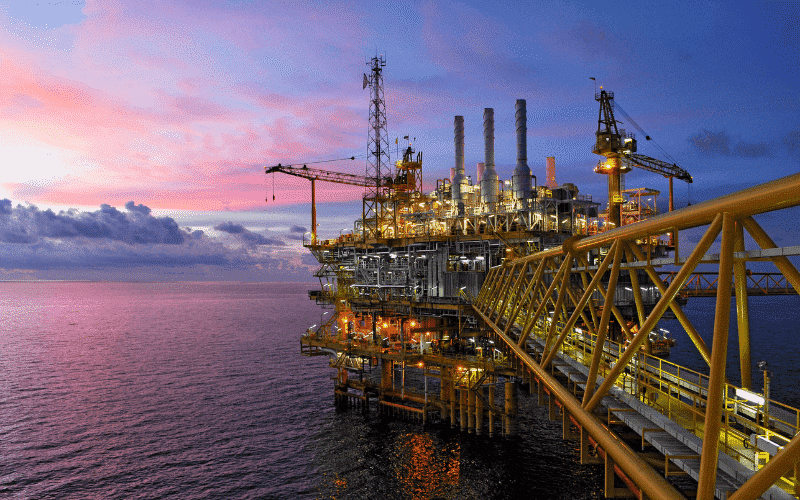
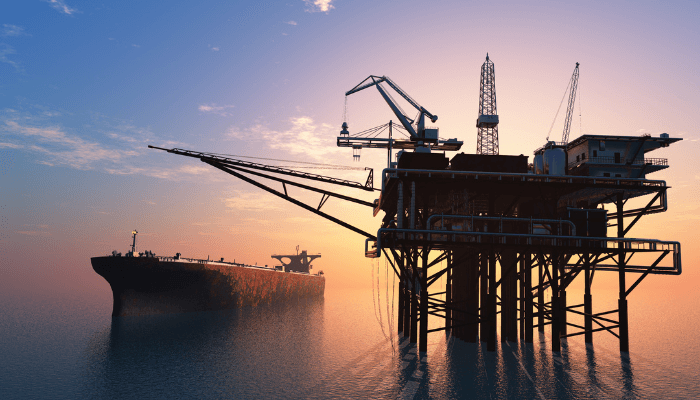
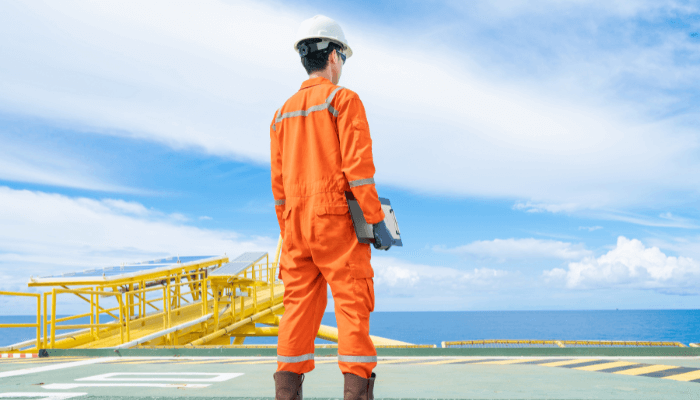





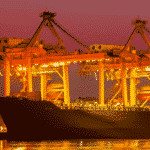








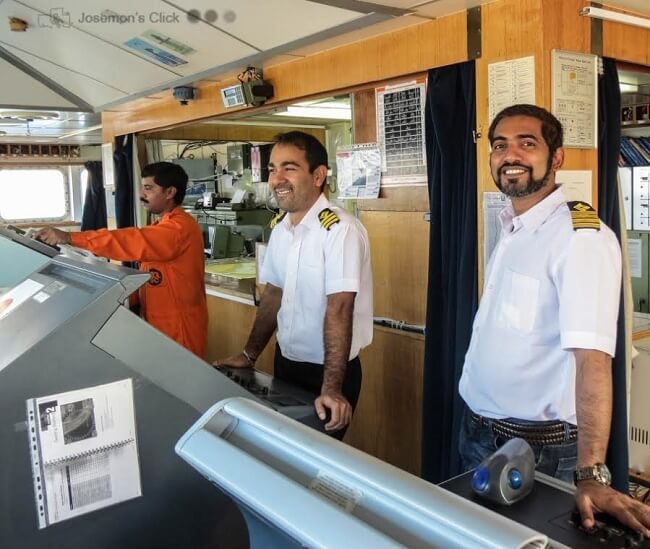
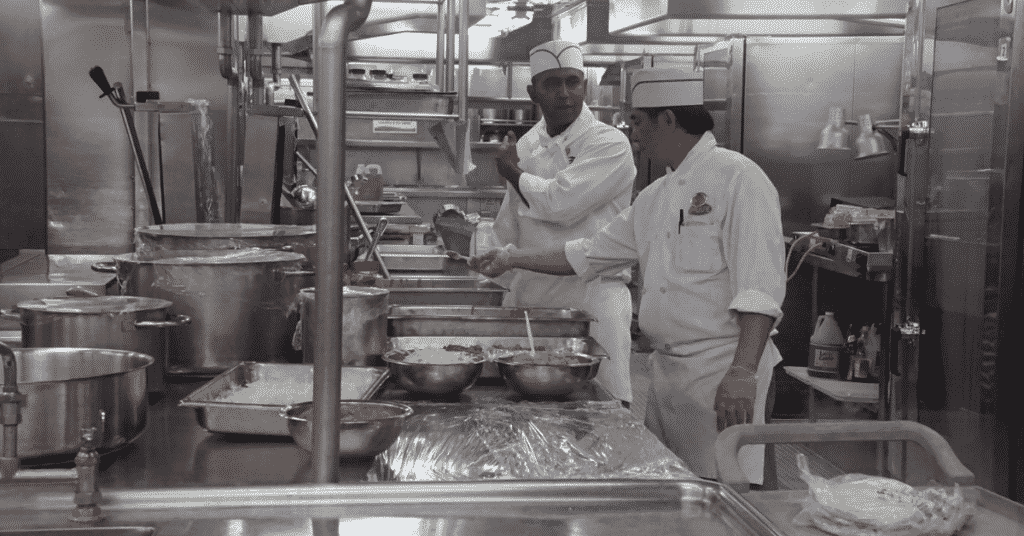
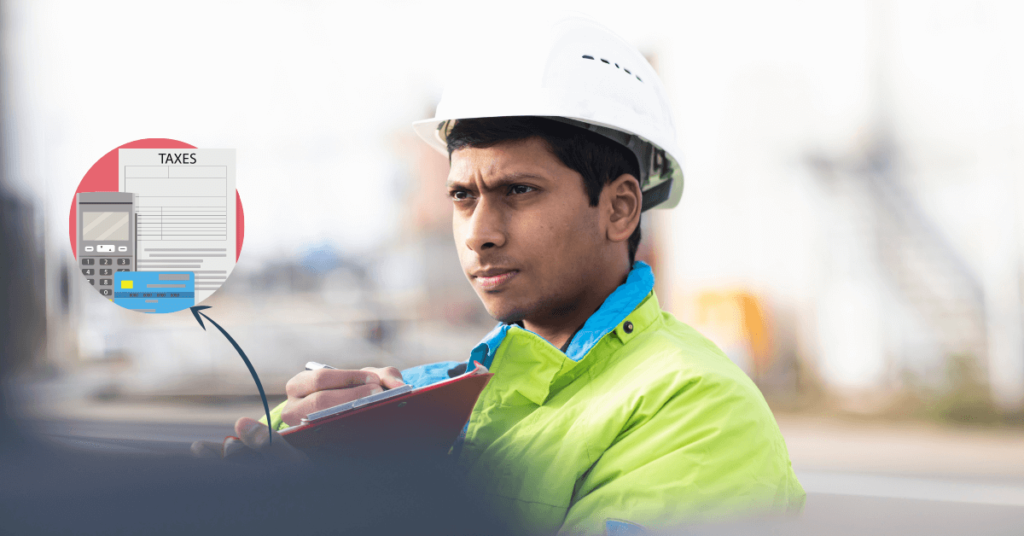
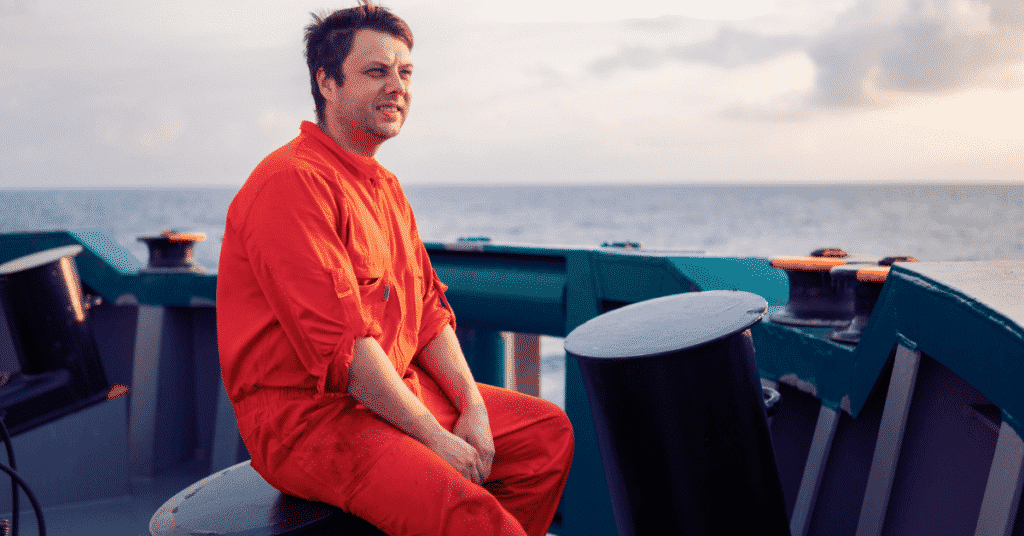

I like reading blog posts, and when I stumbled upon to this weblog, it just blew me away! Hey there I mean it! Your contents are rich and I discover them very useful! I wish I could post like you do but I don
Life is hard to be a cook out on the rig the pay not good they have who live across the world working housekeeping not the local peoples so your pay is very low so have to do 28 day to pay your Bill’s and have two weeks off its hard to just to said.iam out
Must a worker pay himself to get onshore when it is time for hip to take is break
Why would my friend ask for money when he makes good money as a Roughneck for 12 years
Because your “friend” and mine are liars and scammers. There was an article in a recent Toronto, Canada magazine warning that people to be claiming to work on oil rigs are scammers. Mine also asked for money and my girlfriend had it happen to her too. We both met our respective men via an on line Scrabble game during the summer.
Just today, my guy reappeared after not speaking to me since October. I looked up “living on an oil rig” and the internet warned in big, bold letters that if you are ever asked for money, it is a SCAM because the rig employees have full access to their salary while on board. I am in the process of looking it up again to send to my creep. Maybe we should compare notes.
I have some questions about life on a rig for a supervisor. Do you all have to down load your specs from welds or dive to see the welds? And do you contract for water to be delivered. Or is that through the company like Exxon? And are there individuals contracted to do certain jobs?
Marie you are probably getting scammed
I have been in that situation.marie do not send any money ok They will make out they need it for data to keep in contact with you, I would love to know this person’s name
Quite hilarious. 2 weeks away for 3 weeks off. 8-12 hour shifts. lol Try the North Sea.some of us have lower salaries, then do 3 weeks away, 1 week home and BA k out again.Dont know anywhere where there’s an 8 hour shift. Try minimum 12, up to 17 hrs. Poor Blog. Do your homework.
I work on rig. Life is tough
I worked in offshore platforms for my different projects. It is hard work but there are lots of benefits. If you can pull through say 20 years you can retire and live comfortably. After that if you wish you can take a local job for pocket money. Hard life is over.
Hi I am 19 years old and I am currently studying . I have a choice . I can be a mining engineer or a petroleum engineer . If I become a petroleum engineer I will work only offshore . What do you think is the better choice???
An offshore workers pay depends on his job. Some jobs do not pay well and the worker has a second casual job, which he can do during his leave period. Why did i do it? I liked the work cycle. Shifts have always been 12 hours. For my job the money was good. The negative was your family carries on while you are away and you miss so much. The divorce rate in the industry is high.
I have worked in drilling and oil and gas for nearly 8 years, I’m sorry to say boys there is no off shore rigs anymore lol especially in Canada and the USA . 80% of Canada off shore rigs are decommissioned and rig day rates are not even worth the effort .get a job at McDonald’s or subway you’ll be much happier and probably get laid
Good saying on oil field guys as I have worked in oil industry overseas more than 31 years and still on look out for any new assignment
As a former oil rig employee and supervisor I can assure you there are several things wrong with the story. there is no such 8 hr. Shifts are always in 12 hour increments because 2 shifts of 12 hours equals 24 hours. Platform production work is totally different than”drilling rigs”. If you’re told by anyone a sob story of down luck you are being 100% scammed. 19 years total around the globe and worked believe me it’s a GREAT living.
I’ve got a person I’ve been talking to for a few months and wants me to buy him a Nike card for data for his computer on the rig. Says he’ll run out and won’t be able to talk to me or his daughter. He’s on there for a 4 month contract. So people stay on for 4 months to finish a contract?
I’ve got a person I’ve been talking to for a few months and wants me to buy him a Nike card for data for his computer on the rig. Says he’ll run out and won’t be able to talk to me or his daughter. He’s on there for a 4 month contract. Do people stay on for 4 months to finish a contract?